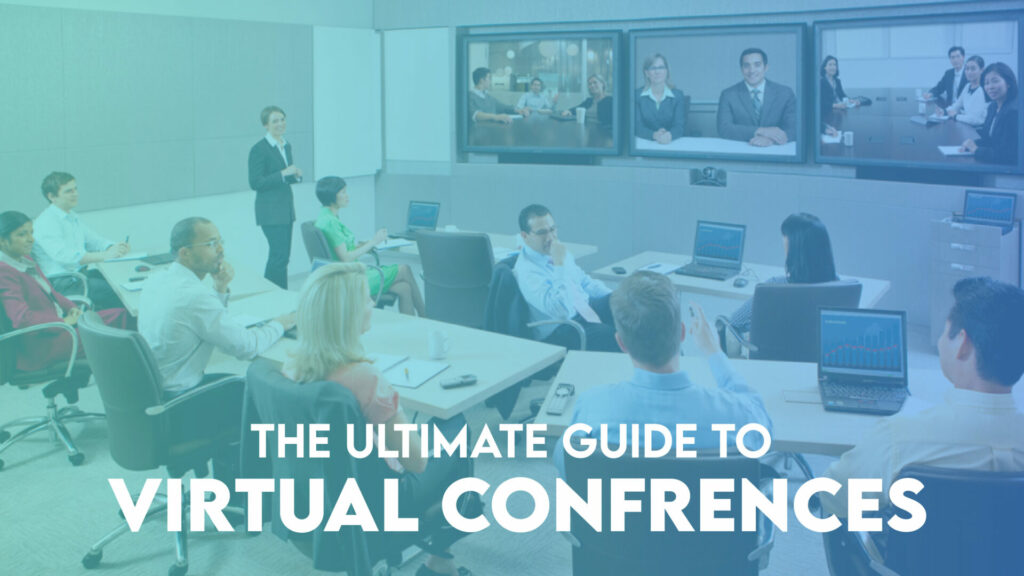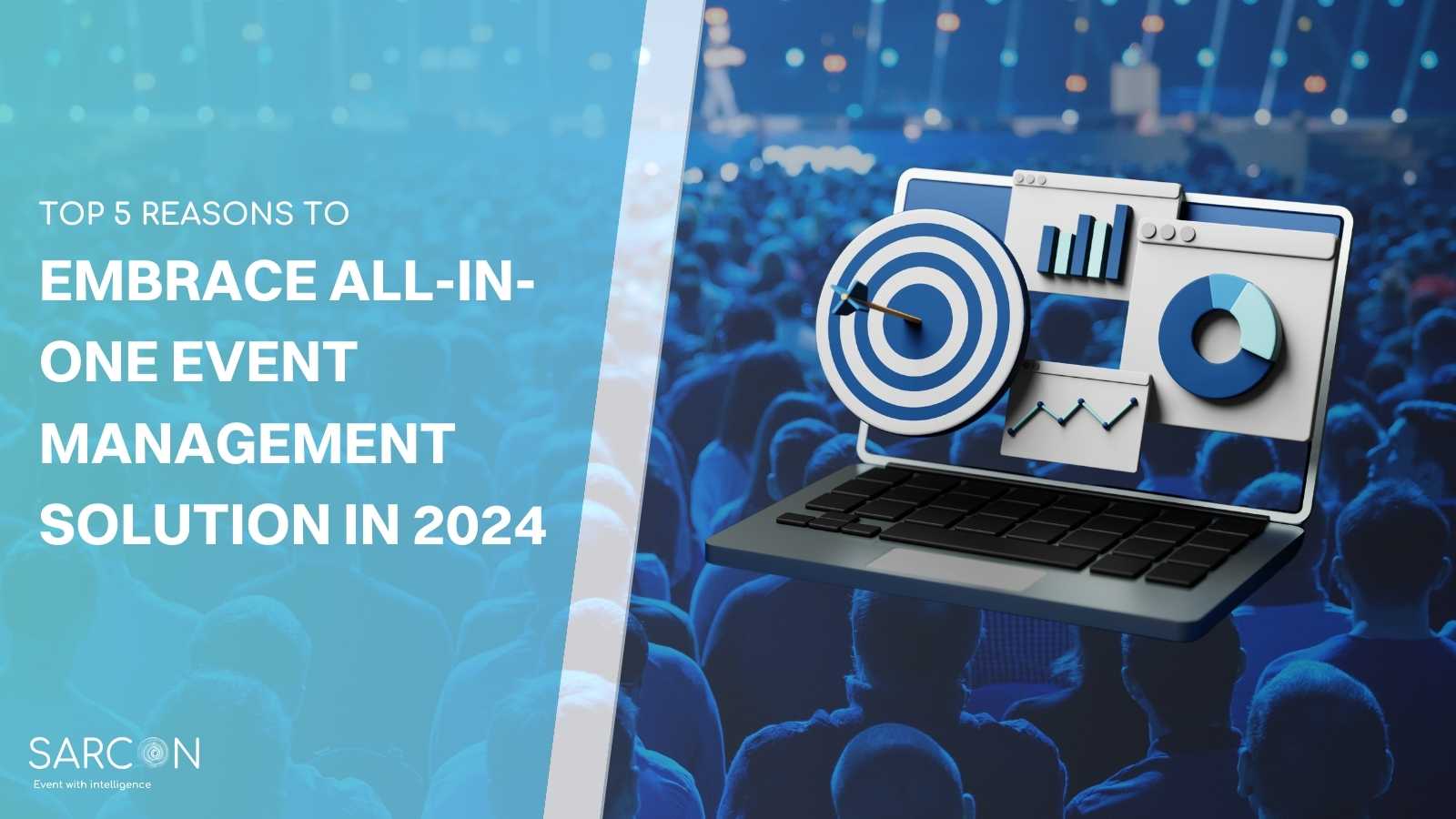The events industry, including every sector, experienced a sudden jolt in 2020. It was one of those critical moments in history where one had to improvise, adapt, and overcome the crisis that came unannounced.
Companies rose to the occasion and adapted to these sudden changes. Talking about the events industry, the era of virtual meetings saw a drastic boost. According to Statista’s Virtual Event Marketing report, In 2020, the market size of the global meetings, incentives, conferences, and exhibitions (MICE) industry was projected to be worth around one trillion U.S. dollars.
Virtual conferences came in to save the day for those occasions where connecting with others was necessary, but social distancing was inevitable. We now live on the other side of a dividing line that will forever be defined as a post-pandemic world. And myriad new trends, including hybrid and virtual realities, are becoming a way of life.
The process and standard operations for physical events have changed completely. Let’s understand the driving forces behind these events and why virtual conferences are inevitable.
What is a conference?
By definition, a conference is a crowd of like-minded individuals who have gathered in a common place with an aim to strategize, present, brainstorm or build ideas.
It contains a theme at the center with a matter of common concern or interest.
Conferences bring groups of people together, sharing common interests. The aim is to network, learn, discuss, plan, and execute an idea.
When you replace the medium where this gathering takes place from a physical location with a digital one, it becomes a virtual conference.
Keynote sessions, breakout sessions, virtual business card exchange, and networking lounges are some of the nuances that make up virtual conferences of the digital world.
Before diving deep, it is essential to note that virtual conferences offer significant advantages over in-person conferences from a bird’s eye perspective. They are more convenient, less expensive, save travel time, provide greater flexibility, and can host astronomically larger audiences than traditional conferences.
What Makes Virtual Conference a Viable Option?
The hybrid reality was something that was reserved only for those who chose this topic voluntarily. However, the world today has embraced this phenomenon unsolicitedly but with open arms.
Hybrid working culture, for instance, has become a part of a large population. Organizations and the workforce learned that the lack of physicality does not necessarily have to demolish the benefits of a pure offline world. Hybrid culture rather uprooted the redundant processes and enhanced the more solid elements of the offline world.
The same goes for virtual conferences.
Virtual conference surpasses the ROI of their physical counterparts. How?
Technological Advancements
With a virtual conference, you get all the convenience of a traditional conference but with increased cost savings. Thanks to some cutting-edge event technology platforms, you now have more features than before, greater control over your event than you can imagine, and all with flawless 24/7 customer and technical support.
Go Green
This is what an ideal win-win situation looks like. Not only do you save huge sums of money, but you also leave a significantly less carbon footprint with a virtual conference. The venue, catering, and hospitality costs are out of the window.
And imagine a scenario where you wanted to invite guest speakers, but they would have to pass on that opportunity due to location and time constraints. A virtual conference eliminates those aspects.
Limitless Audience
Your attendee list can be as big as the physical venue would allow it to be. But, with a virtual conference, you can make potentially unlimited real estate in the digital world.
You can also bring in any number of attendees that you’d like from geographically far-fetched locations.
Plus, a virtual conference can always be available on-demand, even after the live sessions have ended. This eliminates the limitations with respect to time zones.
Networking
One of the quintessential parts of a business is the right kind of networking. Physical conferences provided greater networking capabilities, enabling a more natural flow of conversation.
But, most of our time gets wasted simply figuring out the right person to network with.
Virtual event platforms simplify networking by providing smart tools and functionalities that ensure you connect and interact with the right people.
Networking and matchmaking tools match you based on your profiles and save your valuable time as an attendee.
Analytics, Lead generation, and Loyalty
Organizers host live webinars at virtual conferences followed by interactive polls and Q&A sessions. Such engagement activities bring valuable suggestions and recommendations directly from the audience.
This provides a more accurate and raw insight into your audience’s profiles and concerns.
On the other hand, your attendees feel valued. This creates a positive feedback loop, building brand awareness and loyalty.
With lead-capturing functionalities available on most virtual conference platforms today, you can strengthen your mailing list and solidify your lead generation lifecycle.
Virtual Conference Checklist
These are some vital features a virtual conference should have to achieve the desired goal.
Ease of Use
Without a second thought, this should be your top priority. Choose intuitive virtual conference platforms that are not unnecessarily complex. Evaluate the right kind of platform on different parameters that are most important to you.
- Do they offer support and training?
- How fast and reliable is the platform?
- Can you, as an organizer or the exhibitors, make changes in real time, or will you have to contact the technical team every time?
- Can you host other events like virtual trade shows and if it supports hybrid events.
Extensive Features & Tools
Brand awareness and identity are as important for organisations as networking and lead capture. Therefore, look for platforms that offer ease of customization.
Sarcon’s cutting-edge virtual conference platform allows users to design a customized experience for their attendees and sponsors.
With extensive features and better control over customization, you can replicate your brand’s identity in the digital world. Adding exhibit halls, lobbies, and auditoriums allows you to provide a tailor-made experience to the attendees.
Features like keynote sessions, a networking lounge, or a sponsored meeting provide the attendees with an opportunity to engage in meaningful conversations.
Sarcon’s platform provides a suite of integrations to cater to your needs.
Event Marketing
Social promotion and marketing cannot ever be overstated. Social media platforms and inbound marketing channels contain an unfathomable amount of potential.
Plan the conference with your team and employ Search Engine Optimization (SEO) tools such as tags, titles, and keywords to reach a wide demographic.
Use platforms like Twitter, Facebook, and Instagram to promote your virtual conference. You can ask attendees to share quotes, screenshots, hashtags, and photos of the upcoming event on their social media profiles.
Virtual conference platforms provide the ease of event marketing with their built-in tools and integrations. They help you create email marketing campaigns, viral social media campaigns, and landing pages with high conversion rates.
Customer support
Any good SaaS platform understands that there is a learning curve for their customers when they employ these tools. Even though virtual conference platforms are designed in a way where the users can seamlessly navigate and pilot the event, sometimes even the tiniest problem could throw someone off. Troubleshooting and impeccable support should be a priority.
Insights & Analytics
Capturing and analyzing data during physical events is more challenging than virtual ones. This is another aspect that sets virtual conferences apart. As an organizer, you gain valuable data about the attendees during and after the virtual conference.
You can get heatmaps and interaction touchpoints, the amount of time they spent in a particular spot, and how much they engaged from a personal standpoint.
The correct data and insights will help you drive future content more efficiently.
How to Host a Virtual Conference?
It will still take some time before the world learns to master the process of the virtual conference. As we had discussed before, the power of virtual and hybrid technologies can enhance traditional in-person conferences and elevate the experience when put to the proper use.
Let’s look into some of the major steps one can take to ensure the best possible outcome from their virtual conference.
Define the Outcome of Virtual Conference
A problem well-defined is a problem half-solved. Define your objectives and the problems you are solving with the virtual conference in a clear ironed-out manner.
Define your target audience. Lay out your plan for measuring vital metrics. The more detailed, the better outcome of your virtual conference will look. A well-defined plan will help you navigate through the next step.
Select the Virtual Conference Platform
With the help of a clear plan and goals, you will be easily able to identify the set of tools and amenities you will require to run the virtual conference.
This action will help you pigeonhole your thoughts and narrow down the virtual conference platform options.
Some of the tools that you will need are:
- Registration & Ticketing: You can sell more tickets through the platform’s registration, ticketing, and event marketing tools. It will also help you build an event microsite, sell paid and free tickets, customize access levels, and integrate the site with payment processors.
- Event engagement & Gamification: Engagement is the key to a successful event, and gamification is a great way to engage your audience. You can keep your attendees hooked and engaged with leaderboards, scavenger hunts, social walls, photo booths, and even HTML5 games.
- Event Reporting & Analytics: Reporting and analytics tools help you capture and access all the data you need at your fingertips. Some virtual conference platforms, like Sarcon, employ state-of-the-art business intelligence technology to ensure they crunch out the most important insights.
- Integrations: Automating your workflows can save valuable time and resources. With a platform’s seamless integrations, you can create a rapid ecosystem of your favourite tools, including Stripe, Slido, Zoom, Youtube, and more. And if you don’t see what you need, you can request the support team for all possible candidate tools.
- Specialized Features: Create unique experiences for your audience with some specialized features that the platform can offer. They can include various events ranging from certificate creation and poster presentations for medical and academic conferences to job boards and matchmaking for job fairs.
- Localization: Attendees should be able to can easily view the platform in the language of their choice. Sarcon supports a wide variety of languages, including English, Spanish, Japanese, Mandarin, and Arabic. If you do not find the language you are looking for, you can request support for all candidate languages.
Promote your Event
How can you drive more registrations and ensure that a large number of people attend your virtual conference? By creating funnels through which you drive more traffic to the registration page.
And what makes a good marketing funnel?
- Social media – After zeroing down on your target audience, the next step is to create engaging social media campaigns with high-converting copies. Facebook, Twitter, LinkedIn, Reddit, and Quora, there are numerous platforms where you will be able to engage your target audience.
- Email marketing – What if a certain amount of your target audience can never see your social media posts or are not active on social media? This is where your existing mailing lists and a stunning email campaign will come to the rescue.
- Use your speakers’ influence– Ask your panellists and speakers to promote the event on their social media accounts.
- Landing pages – Integrate landing pages on your company’s website through which users can directly register for the events. Share the landing page link across all possible mediums to reach a larger audience.
Practice and rehearse the event before the d-day. You can ask your virtual conference provider to conduct a test run with you. Check whether the essential features have been covered.
Key Takeaways
The age-old adage of improvise-adapt-overcome is What’s best during these times to keep moving forward. And this will require picking up the right tools to face the odds.
With our state-of-the-art event management software, your team is fully equipped to run events of all sizes. We have you covered, from branded webinars with a few hundred attendees to massive international expos with hundreds of thousands of visitors and hundreds of booths. With Sarcon, you can achieve higher ROI for your events, even with a small team.



